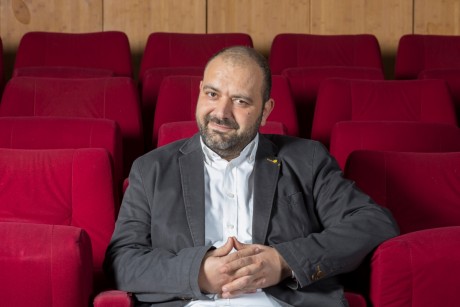


Werner Herzog – Ecstatic Truths

10.30 in the morning, Kupferstrasse in Leipzig. There is a line outside the Kupferhalle, where Werner Herzog is to hold his masterclass or as the DOK Leipzig organisers called it, “a conversation” with Kristina Jaspers, who knows about the director and has written a book about him, (as has Danish Kristoffer Hegnsvad). (And let me lead those who are interested to this site´s “Collected Posts on Werner Herzog”: http://www.filmkommentaren.dk/blog/blogpost/1940/).
Those in line waited to see if there were tickets to get. We had already been given tickets so in we (my wife and I) went with high expectations as we had heard that Herzog is a brilliant and inspiring speaker. And deep as had colleague Allan Berg experienced at the Danish Film School.
He was not deep this morning where everyone got in – festival director Leena Pasanen mentioned that we were around 500 to listen to the master. Not deep but entertaining he was from the very beginning, where he corrected Pasanen on how to set the audience microphones in the right positions! A director going in details.
Herzog followed up on yesterday’s film “Meeting Gorbachev” saying that on all three
conversation occasions Gorbachev came from and was brought back to the hospital, where he is getting treatment. They had three times 11/2 hour of conversations. And how did you prepare for the conversations, the question came, “nobody can tell you how to conduct a conversation”, Herzog said. It’s a matter of whether you connect immediately or not. He repeated from yesterday that he thought the demonization of Russia should stop.
Apart from some provocations – there are 4500 festivals in the world but only 4 good films per year! – he gave good background to “Lessons of Darkness”, one of his masterpieces, where he worked with British Paul Berriff, according to Herzog an undaunted cameraman, who could go down in the desert to film near the burning oil. He also revealed that the quote in the beginning of the film credited Blaise Pascal, was actually written by Herzog himself, Pascal could not have done it better!
A question came from the audience about his voice; he always makes the commentary himself. “As I have written the text myself, I have to read it as well. As before on many occasions – said to a young filmmaker – “there’s no excuse any longer, you can shoot on small cameras or with your cell phone, I don’t believe in film schools as they are set up, I have set up my rogue film school and it works. You can make a feature film for 10.000$, a documentary for 1000$ but you need a vision and courage.”
“I feel a big responsibility, when I am making a feature film. I want to control the cash flow every day… I want to stay under budget”. “Not possible the producer said”. “I will stay under budget”, I said, “and I made a deal that I would get a bonus if it happened. It did!”
The entertainer is also an actor and a hilarious scene with Herzog as an actor was shown after a more serious insight to a scene from my favourite Herzog documentary, “Little Dieter Needs to Fly”. Dieter wanted to talk about death, Herzog said, I told him that I could do that much better in images, and we saw the scene, where Dieter stands in front of the jellyfish aquarium.
“Lo and Behold”, we did not see a clip from that film, but Herzog declared that he has made the only competent film on the internet.
Photo by film director Andrijana Stojkovic. Thanks.









